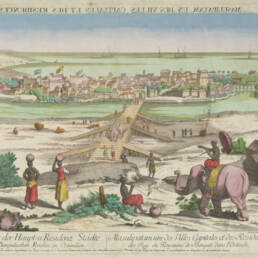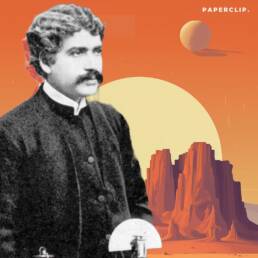Almost a thousand years ago, after the Second Crusade, a French Crusader plucked out an indigenous flower from war-torn Syria. The flower made its way to India through the Mughals and helped shape the Perfume Capital of India.
According to historic evidence, Damascus is known to be the oldest capital city of the world. Often referred to as the ‘City of Jasmine’, it has also been home to one of the earliest species of roses, known as ‘Damask’.
The rose, named after the city, remained indigenous for centuries until 1148 CE, when after the siege of Damascus at the Second Crusade, a French Crusader, Robert de Brie, mesmerized by its essence, brought it back with him to Europe.
India, however, had to wait another four centuries for the magical scent until the first Mughal emperor Babar brought camel loads of Damask roses into India from Persia. Those later contributed to the creation of the most iconic perfume of India and the subsequent rise of a city.
The small city of Kannauj was located at the heart of the triangle formed by Agra, Lucknow, and Kanpur—three Mughal strongholds. It was built on the rich alluvial Ganges soil that historically favoured the cultivation of flowers.
During 600 CE, under King Harshvardhan, the entire North India was known as the kingdom of Kannauj and the city itself, for its affiliation with the indigenous craft of natural perfumery was known as Kusumpura – the city of flowers.
As the Mughals came in with their extravagant use of scents in everyday life – from foods, furniture, fountains to parts of the body, the demand for Kannauj’s natural perfumes skyrocketed.
According to a local folklore, Noor Jahan, the wife of Mughal emperor Jahanghir once took a bath using Kannauj’s locally-made rose water and she was immediately bewitched by its aroma, thus becoming the first royal patron of the city.
The perfume industry in Kannauj started at least two centuries before Grasse – The Perfume Capital of The World. Despite Kannauj’s widespread popularity of its rose perfume, very little Damask roses were cultivated in the city itself.
Perfumers of Kannauj, had to travel to Aligarh, the main source of Damask roses, to either collect the raw flower petals or the pure rose essential oil to produce attar. The distillation process of its indigenous attar, however, remained identical since ancient times.
Surprisingly, even the owners of these distilleries and the subsequent businessmen don’t know the exact process of producing the attar. The whole process is known by heart only by the master craftsmen who were working in these distilleries for generations.
The infamous bandit Veerapan used to supply Sandalwood, one of the key elements to make attar, to these distilleries.
But his assassination, and the subsequent ban on logging by the Indian government, added to the misery of Kannauj’s attar industry. A kilo of the finished product at its utmost purity costs as high as Rs18,000.
In comparison, the popular imported brands, with a 3:1 ratio of mixed synthetic chemicals and pure extract cost a whopping 90 times less. The contest is simply unwinnable, and the market demand is facing a steep decline.
While the war-torn Damascus has already lost a significant amount of its indigenous flower forever, Kannauj, the Perfume Capital of India, is now on the verge of losing its century-old craft of Damask rose attar.
Sources:
- Rai, Vasudha. “Kannauj, the perfume capital of India, and the dying art of natural perfumery”. https://www.vogue.in/beauty/content/kannauj-the-perfume-capital-of-india-and-the-dying-art-of-natural-perfumery
- Sachasinh, Rachna. “This ancient city is the perfume capital of India”. https://www.nationalgeographic.com/travel/article/how-did-kannauj-become-a-perfume-capital?rnd=1675713015638&loggedin=true
- “History of the Rose”. https://www.valcena.com/en/lhistoire-de-la-rose/
- Viraraghavan, Girija. “The History of Roses in India ( Arts & Medicine )”. https://www.indianrosefederation.com/aboutus.html




